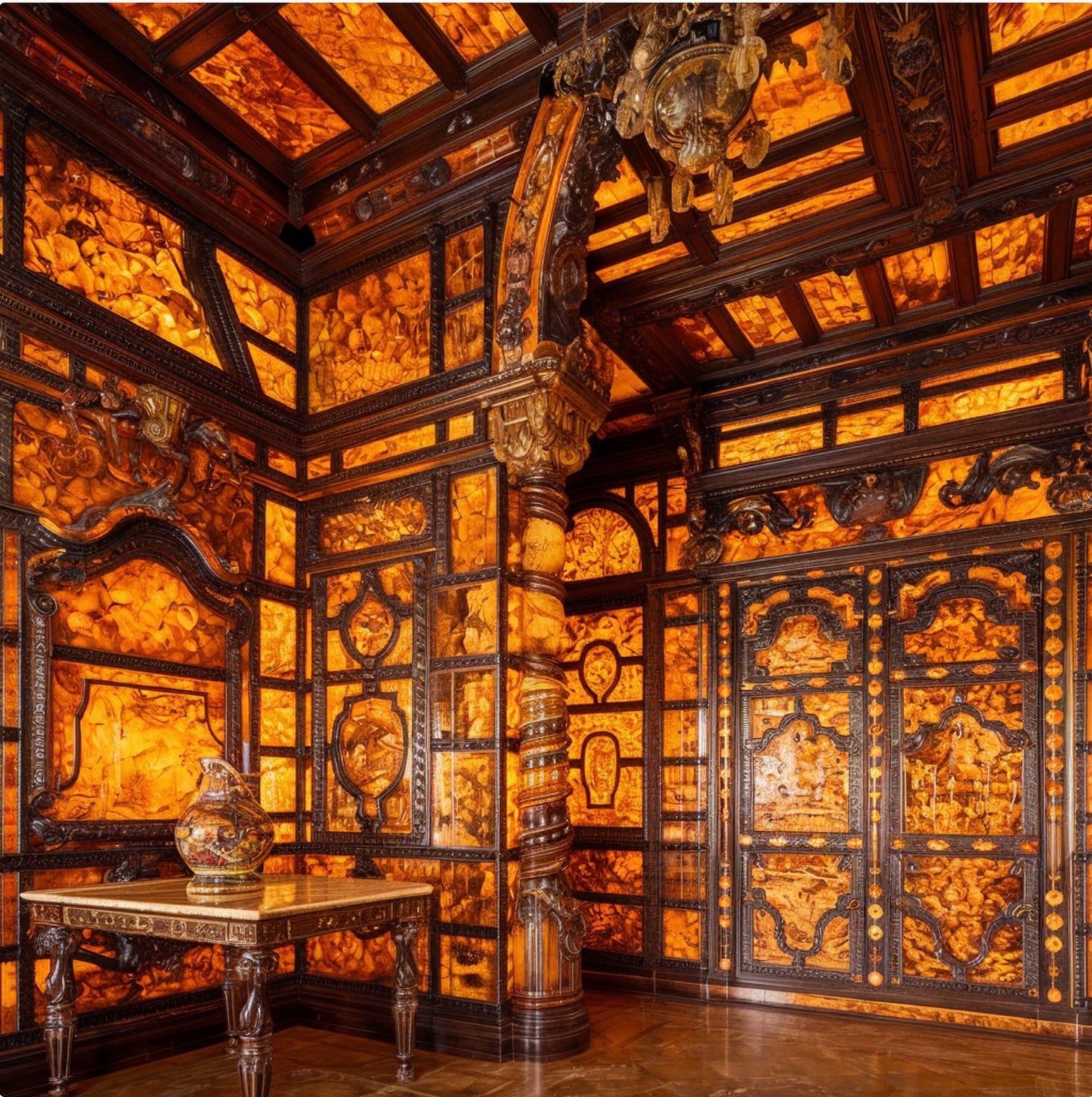The term amber is used to describe a particular sweet-aromatic accord in perfumery. It usually refers to a friable material sold all over the Arab world and beyond, made up of acetanilide (an odorless powder) mixed with labdanum resin and vanillin, often with other resinoids added like styrax and benzoin. The acetanilide makes it possible to carry the stuff around without being covered in sticky mess. This stuff is often called vegetal amber and smells great. But why is it called amber in the first place? Surely Baltic amber, which is solidified tree sap, has no smell? I used to walk into the wonderful Sac Frères shop (now gone) on London’s Bond Street to look at their amber jewelry, but I never smelled anything in the air.
The reason amber is a perfumery term is that chemists, ever eager to dissolve and distill everything they can get their hands on, discovered long ago that Baltic amber liquefies when heated and can be distilled into a fragrant oil. This is not surprising, given that amber is made from highly fragrant tree resin in the first place. Amber oil was widespread in the 18th century but could not compete with its cheaper vegetal substitute and disappeared, leaving only the name behind.
Alan Balewski of BALE, probably the person on Earth who knows most about dry distillation of amber, lives in Gdańsk, on the Baltic coast, where most European amber is collected. He says he can smell solid amber, and I trust his judgment. He explained that straight-up distillation gives a dark, harsh smelling and nasty oil, from which pleasant fractions can be further separated. He has also investigated the truly fascinating nitrated amber discovered by the great chemist Sigismund Marggraf. Adding nitric acid to everything has been a favorite of chemists since its discovery in 800 AD. It reacts with the components of amber and probably creates nitrated aromatics related to the nitro musks that came a century later.1
Balewski kindly sent samples of three different kinds of amber oil that he distills: the nitrated one, which to my nose smells like really good Armagnac up top; an oil made from fluorescent “blue” Dominican amber, which smells like new car; and a sample of the fractionated Baltic amber oil, which broke in transit and spilled its contents. The envelope smells wonderful, a light, dry leather smell completely unlike what I expected.
He also sent samples of three fragrances composed with these oils. For paid subscribers: reviews of Eridan, Hispaniola and Mare Goticum.
Keep reading with a 7-day free trial
Subscribe to Luca Turin on perfume etc. to keep reading this post and get 7 days of free access to the full post archives.




